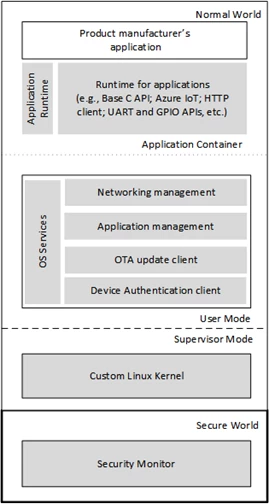In April we announced Azure Sphere to the world. Since then, we’ve been pleased with the deep customer interest and engaging media conversations. This dialogue has been an opportunity to share Microsoft’s vision and commitment to an end-to-end, secured IoT platform and listen to feedback from partners, customers and consumers. Microsoft will continue to tirelessly advocate for IoT security that is not an afterthought. An IoT device must include security measures that span silicon, software and cloud from the moment that device is first conceived in a designers mind.
Azure Sphere’s purpose is to help manufacturers easily and affordably build MCU-powered devices that are informed by Microsoft’s decades of security experience and protected through their connection to the Azure Sphere Security Service. With our public preview milestone just around the corner, we want to share more about the technology behind Azure Sphere. Just this week, we saw the release of Azure Sphere documentation, which covers a range of topics from architecture (an example is included in this blog post), key concepts, developing applications, and deploying those applications over-the-air to devices in the field. Also included is a QuickStart guide, tutorials and a selection of best practices – all of which will help you rapidly get up and running with your dev kits. We thank you for your patience, we expect devkits to begin reaching you in the coming weeks.

An example of Azure Sphere architecture from the Azure Sphere documentation
Check back here for more details and announcements as we approach more public milestones. Until then, enjoy the docs and let us know what questions you have so we can address them in future blogs.
Pre-order a dev kit today to be among the first in line when they start shipping.
